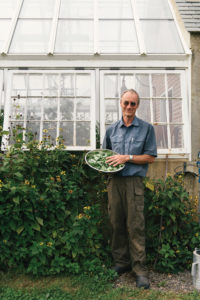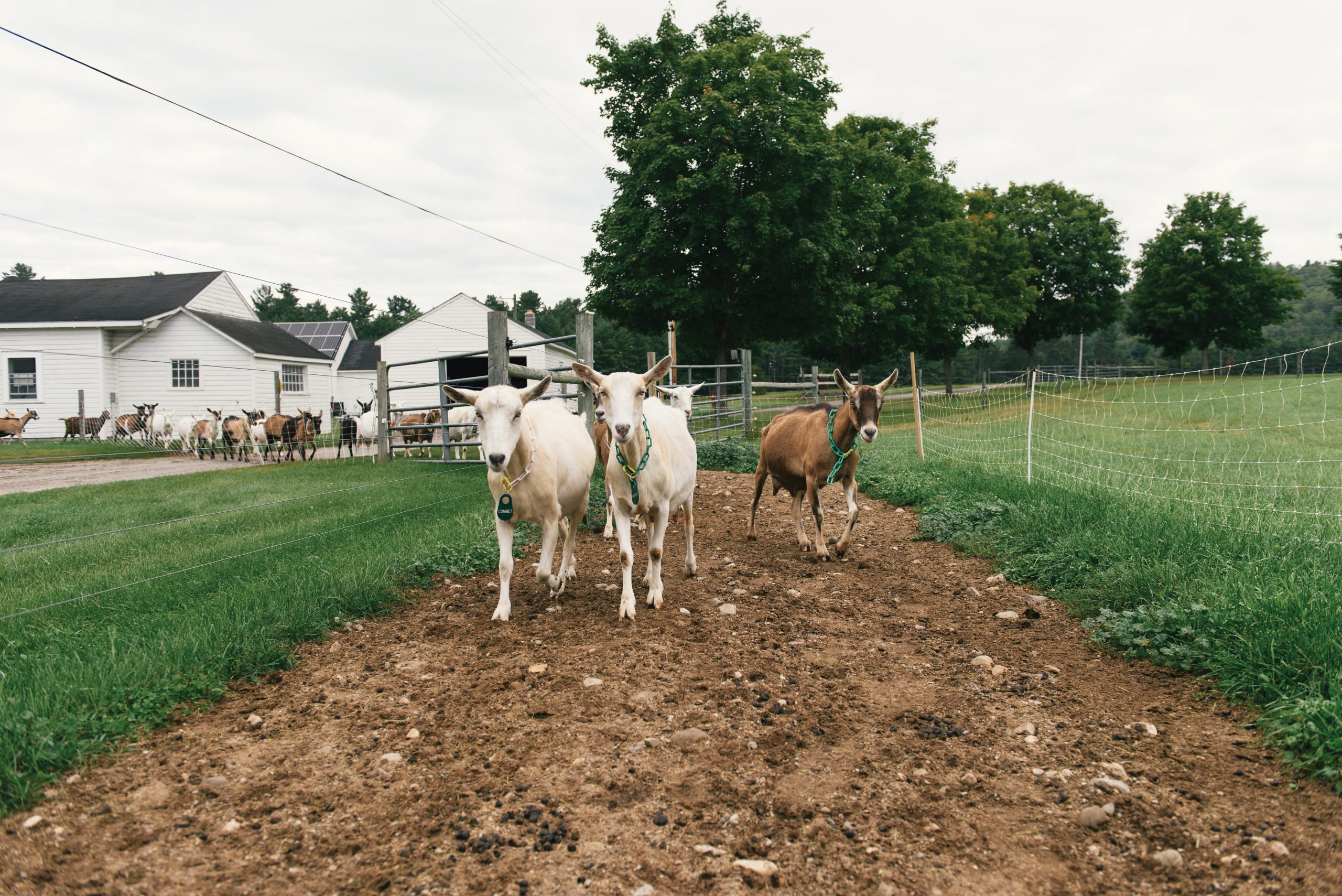
Farms and creameries put a novice turophile into a New York state of rind
Photographed by Matt Dutile
“There are producers here creating cheeses that can stand up against the best in the country,” Kate Arding asserts from behind a butcher-block countertop stacked with multi-hued wheels and wedges. Those words carry weight coming from Arding, who began her storied career at Neal’s Yard Dairy in London before helping to establish Cowgirl Creamery in California and co-founding culture in 2008. That “here” she’s referring to is the bucolic eastern region of New York state, from Hudson Valley to the Adirondack Mountains. It’s mid-July, when my wife, Laura, and I bump into Arding at the reopening of her and Mona Talbott’s eponymously named temple to fromage and charcuterie—Talbott & Arding. We’ve landed to gawk at the duo’s cavernous new location on Allen Street in Hudson, NY, during one of our weekend summer escapes from New York City.
We’re no strangers to the store’s former location on Warren Street, a landmark of cheese and the regional bounty in Hudson since 2014. Every northerly trip for us includes a stop to pick up decadent picnic provisions.
Brad Daschbach, the shop’s head of cheese and charcuterie, sidles around the counter to join us. Daschbach, like so many others who find themselves in upstate New York, moved here to be closer to the source of production and makers. A native of Louisiana, the self-taught cheesemonger worked his way from the specialty department at Whole Foods to general manager at the Warehouse District location of St. James Cheese Company in New Orleans before landing at Talbott & Arding. “Starting out as a cheesemonger, you can have access quickly to some of the world’s finest cheeses,” notes Daschbach. “You can train your palate far quicker than a sommelier might be able to with wine.”
And so, I implore both of them: where could a budding turophile such as myself go to taste the very best of what this pastoral region of the country has to offer?
That’s how Laura and I found ourselves on a tree-lined dirt road a few months later, on a crisp autumn afternoon. It would be the start of a memorable long weekend meandering our way between four exceptional New York cheese producers.

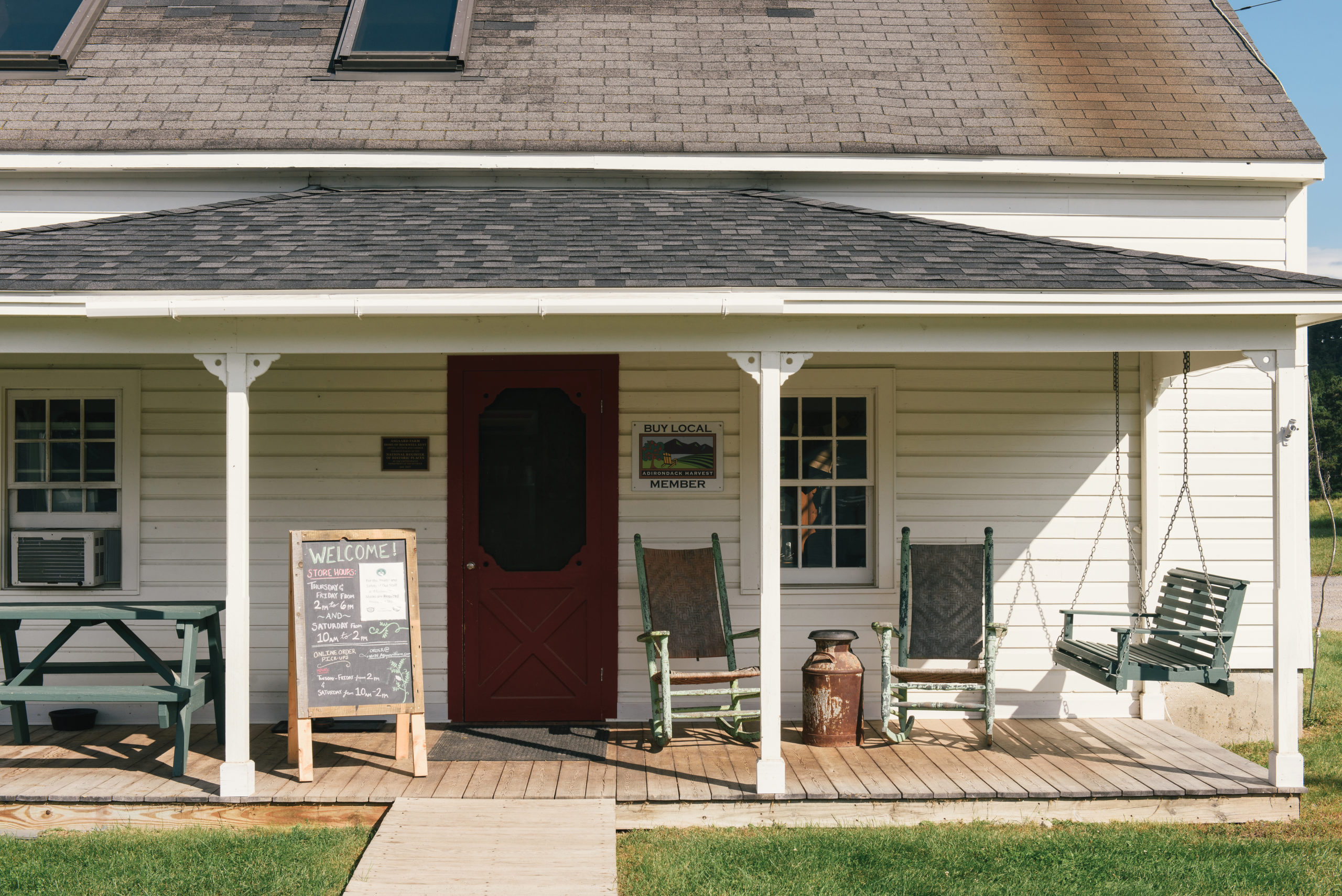
Asgaard Farm & Dairy
In 1988, Rhonda Butler and David Brunner bought the first of three parcels of land at the former estate of American artist Rockwell Kent, outside the hamlet of Au Sable Forks in northern New York. Over the following three decades they restored the property, adding the other two parcels, a further 1,000-acres of Adirondack woodland, 11 covered structures on the National Historic Register (including Kent’s studio), and a menagerie of 60-70 goats, 30 beef cattle, 20 pigs, and 150 laying chickens.
Kent established the dairy estate in 1927, at the height of his popularity, and would spend the rest of his life there until his passing in 1971. People from all around the local community would come for bottles of fresh milk.
Laura and I arrived at the farm’s lovingly renovated Emerson House after a five-hour marathon drive from the city. Built by Kent for his son Rocky, it became the home of Gladys and Tink Emerson, who managed Kent’s estate for 40 years. Today, Butler and Brunner rent the two-bedroom red cottage to Adirondack-bound vacationers like ourselves.
“Originally the idea was a herd of Jersey cows like Rockwell had,” says Brunner from a sunny picnic table outside their farm store. But when their daughter, 10 years old at the time, asked for a pair of goat kids in 2002, their plans changed. “We fell in love with the goats,” adds Butler.
Two would become eight the following year, and 40 in a couple years more. Butler would attend courses at the University of Vermont’s Vermont Institute of Artisanal Cheesemaking from ’06-’09 to expand her education, and operations for their goat cheese and dairy farm began in earnest in 2008.
The couple find that 60-70 goats is the sweet spot for them these days. They produce between eight and 10 thousand pounds of cheese per season, including a flavored fresh chèvre, feta, tomme (Au Sable), bloomy rind blue (Whiteface Mountain), and a signature ripened log—the Barkeater Buche.
It’s understandable why Arding highly recommends the log. Bursting through a vegetable ash rind is a creamy, tangy core that is pure heavenly delight. We’ll sample bites of all their products over the morning, while they tour us around the milking barn, creamery, aging cave, and Kent’s studio in the forest.
“We were inspired by the bloomy rind cheeses of the Loire Valley after living in Paris for two years,” says Butler. “Goats are seasonal milkers, but making the blue, tomme, and feta that we can age and sell all winter has allowed us to have cheese in stock all year. We’re still a tiny producer, and we want to stay that way.”
Sugar House Creamery
Roughly 10 miles down the road is another of the Adirondacks’ superb small producers, Sugar House Creamery. Owners Alex Eaton and Margot Brooks bought the 23-acre property in the summer of 2012, after it had been sitting neglected for several years.
“The pastures were overgrown, and the first stages of reforestation were starting to take over,” explains Brooks while her young daughter Harriet, a self-proclaimed “chicken tamer,” is deftly corralling a stark white hen down the front steps of their porch.
They spent the first year reclaiming the steeply sloping hillsides, building their creamery and aging cave onto the existing Dutch gambrel barn. Eight Brown Swiss cows joined the operation the following year to begin re-fertilizing the nutrient depleted soils. In 2014, they produced their first cheese, an aged Appenzeller-style wheel made from raw milk.

Aptly named for an architectural feature on their barn, Dutch Knuckle, the cheese is my favorite of the trip. Aged for 8-12 months, each firm cut triangle is grassy and full of rich beef broth characteristics. “We knew we wanted to make an alpine style cheese here,” Brooks says. “It just felt right for this place.”
In 2016, Casey Galligan joined the team to manage the creamery after apprenticing with cheesemakers in Languedoc, France and neighboring Vermont. It was in Vermont while they were all working as interns together that she met Eaton and Brooks, and the trio shared their dreams to work a small farm together.
They increased the herd to 12 Brown Swiss cows and one Jersey cow; and added two more exceptional cheeses to their line-up. Poundcake is a pound-sized wheel washed in a salt brine encasing a semi-soft buttery, nutty core, and Little Dickens is a rich and fluffy button with a citrus tang and notes of mushroom. In addition, they sell 60 gallons of raw milk a week during the pasture season.
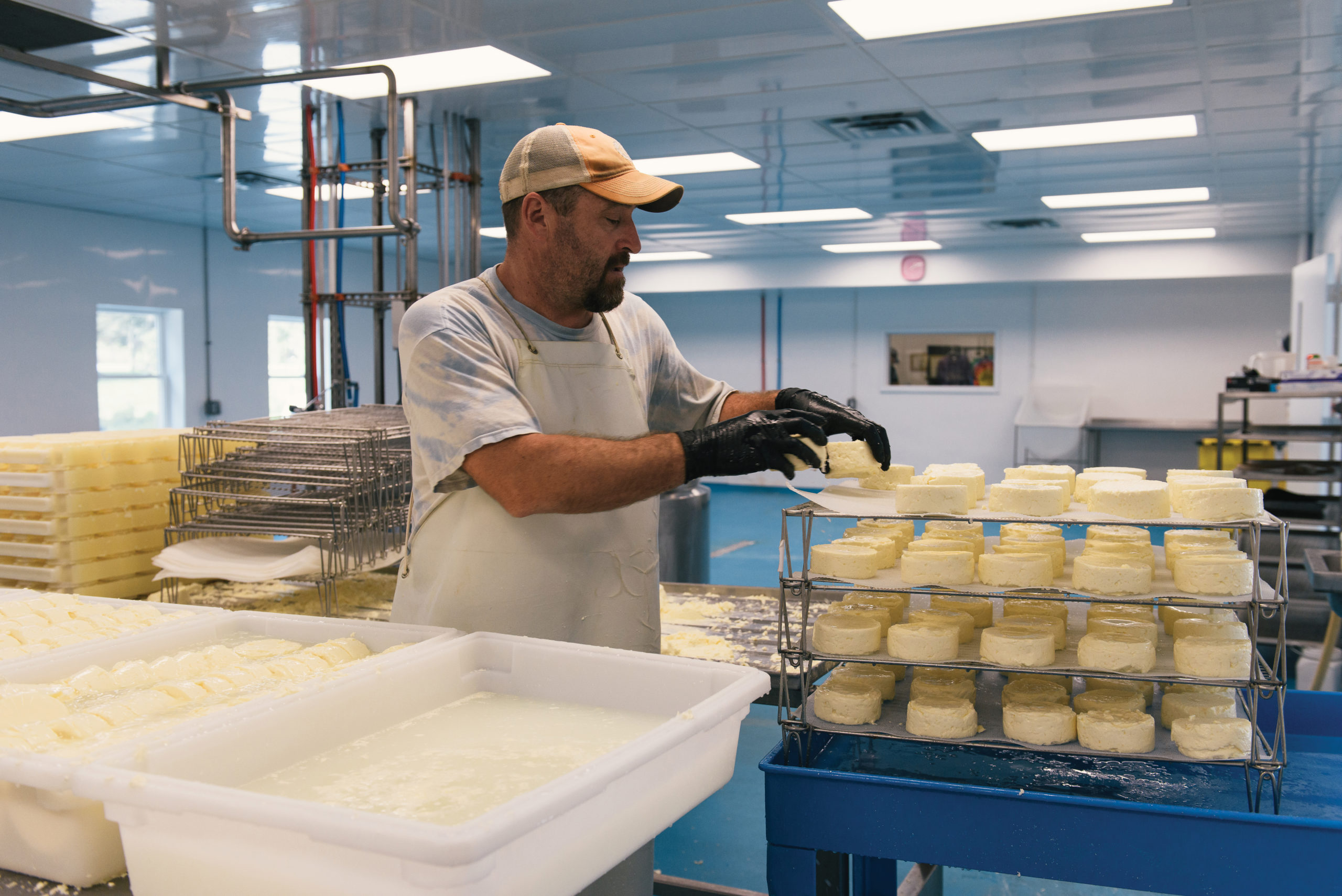

Four Fat Fowl
On the Massachusetts border just outside Berkshires territory, Four Fat Fowl is churning out one of the butteriest triple creams that has ever graced my taste buds. Apparently, I’m not the only one to notice the deliciousness of bestselling St. Stephen. “We’re completely at capacity right now,” explains Shaleena Bridgham, one of three managing partners at the creamery. “We need more racks, molds, and bigger vats to keep up with demand.”
The creamery, in the former Stephentown Elementary school, is beguiling. But behind the tie-dye t-shirts tacked to the wall and vats in renovated computer and music rooms, lies an operation with over 50 years of combined artisanal cheesemaking experience. The trio is rounded out by husband Willy Bridgham (head cheesemaker), along with his sister Josie Madison (operations manager).
Both of the Bridghams worked for many years at the Old Chatham Sheep Co. before launching their own operation. “We tested batches in my grandmother’s kitchen,” Willy Bridgham says, grinning. “We tried 16 molds and 12 cultures, until we ultimately developed what’s close to the final product we make now.”
Bridgham plied his friends, family, and colleagues in the industry with samples from those early St. Stephen tests in 2012. But it wasn’t until he brought it to Kate Arding and received an “exceptional” appraisal that he understood its potential. “Based on Kate’s review, we built a business,” he says.
Before they knew it, St. Stephen was on the shelves at Murray’s, Whole Foods, and Zabar’s, among others. Today, Four Fat Fowl sources its milk and cream from the Jersey cows at Dutch Hollow Farm in Schodack Landing. Along with 3,600 wheels of St. Stephen, they produce 300 wheels of CamemBertha, and 75 to 100 pounds of Inagadda Ricotta every single week.
CamemBertha, a funky and vegetal camembert, arose as a solution for a cheese that didn’t rely on the potential cream shortages or delays that occasionally occur with triple creams. All of the Bridghams’ cheeses are playfully named after the music they love.
Churchtown Dairy
At the end of a weekend of travel, Laura and I finally arrive back in Hudson—our final destination just 15 minutes outside the historic town.
Churchtown Dairy is the archetype of the picturesque dairy farm. It wasn’t always this way. After years of steady milk price declines, and the passage of the Food Security Act, the three previous dairy farms on the 250 acres Churchtown now inhabits were unable to stay in business past the mid 1980s. Developers shortly began scooping up parcels of the former farmlands for housing communities.
In arrive Peggy Rockefeller, of the fabled Rockefeller family. Wanting to preserve the treasured pastures around the Hudson Valley, Rockefeller began purchasing plots as they came to auction. Eventually she amassed over 3,000 acres. In 2008, a decade after her passing, her daughter Abby Rockefeller assumed operations of the land at Churchtown. Her vision was to build a beautiful dairy farm that would be an anchor of the community.

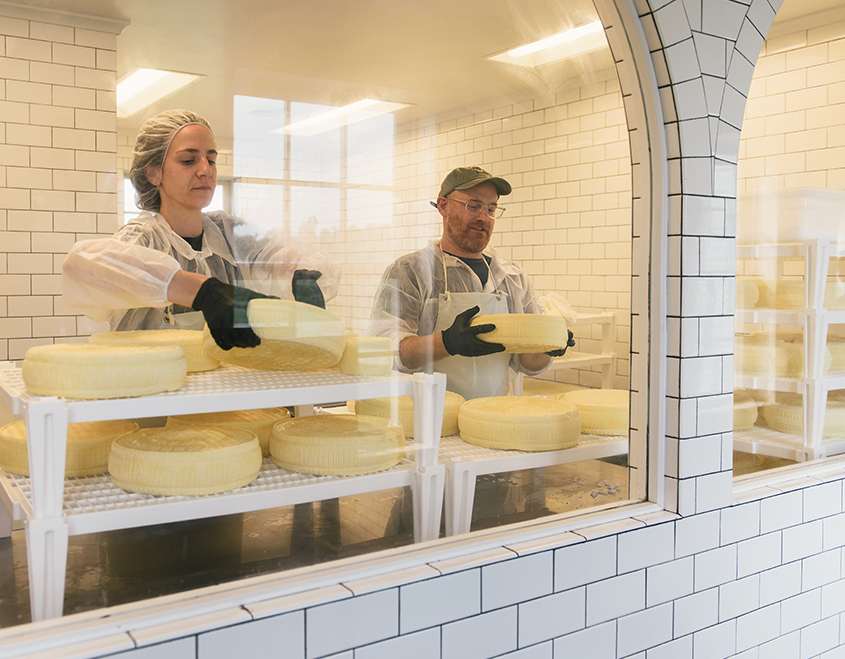
Construction of the iconic Round Dome barn began in 2012, and subsequent years have seen the farm grow to the 28 dairy cows and their calves, 28 beef cattle, a sprinkling of pigs, and 12 employees who call it home today. The team is focused on a return to the biodynamic farming and small-scale agricultural practices common before the industrial boom.
“Nothing is wasted, or as close as we can manage it,” says Deputy Director Amy Gavaris, as she tours us between the milking barn, creamery, and the medicinal gardens. Plants from the gardens are turned into homeopathic remedies and field crops, fertilized by manure compost from the herd.
In 2017, Matt Spiegler arrived from Jasper Hill Farm in Vermont to kick off the cheese production as head cheesemaker. In 2019, he was joined by Grace Pullin from Talbott & Arding to assist in cheesemaking and manage production. Together they produce Churchtown’s three signature cheeses. Peggy is a three-quarter pound, cave-aged camembert-style cheese. “I wanted Peggy to be really light and buttery when it’s young,” says Spiegler as we cut into a few wheels. “But as it gets older it develops these great mushroom and chicken broth characteristics.”
Coperthwaite begins the same way as Peggy, but receives a wash in a blend of cultures to give it more meat and aroma. The chicken broth flavor is laced with notes of onion and a mouth-watering umami. Lastly, we sample cuts of Wendell, a semi-hard tomme. Aged in Churchtown’s cave, this is a cheese that really does well with a little time, further developing its nutty and caramel notes.
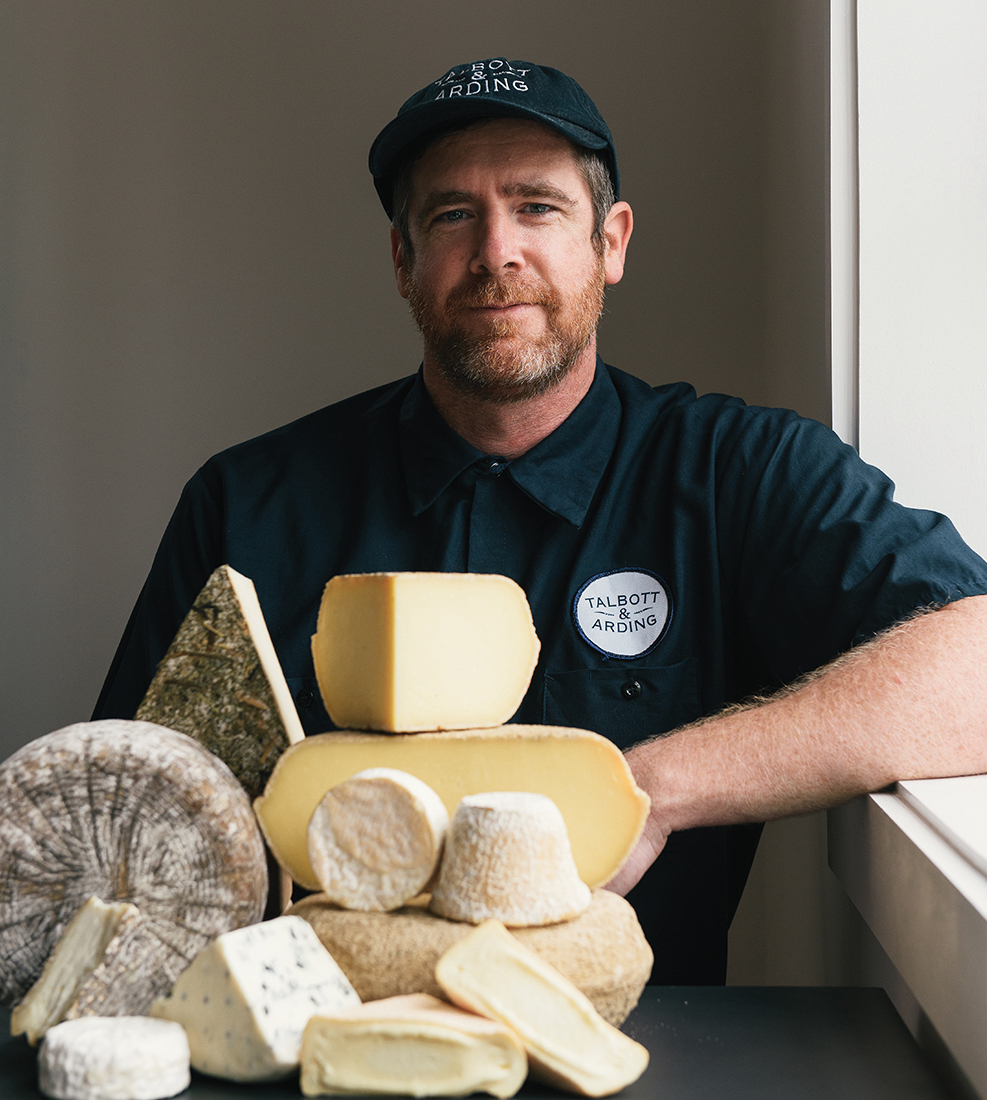

That evening, Laura and I, and the team at Churchtown, are joined by Arding, Talbott, and members of their crew with bounty of food prepared by Talbott from producers around the Valley for a dinner with friends and colleagues under the Round Dome. In addition to the offerings from Talbott & Arding and cheeses from Churchtown, there is produce from MX Morningstar and Plane Meadow Farm, and plenty of beer from Suarez Family Brewery.
We feast on a cheese course prepared by Daschbach of Peggy, Wendell, and Coperthwaite with Talbott & Arding sour cherry jam and seeded spelt crackers; Northwind Farms pork shoulder bathed in Churchtown milk with cardoons, lemon, and garlic; MX Morningstar Farm turnips with greens and spigarello with cayenne; and a delightful apple blackberry galette with Churchtown cream. Under the eaves we raise a toast; to friends, to better times ahead, and most importantly, to really, really exceptional cheese.

Where to Eat and Stay
WM FARMER & SONS At this family run restaurant, chef William Kirby Farmer is elevating the bounty of the Hudson Valley to its peak expression. The menu changes seasonally, but snag the beef tartare with truffled wontons and Hudson Valley steelhead trout anytime you see them. 20 S. FRONT ST. HUDSON, NY 12534 | WMFARMERANDSONS.COM
THE MAKER Step back into a more decadent age at The Maker restaurant and adjoining lounge. For extra cheesy bites under the glass conservatory at the restaurant, look for the ricotta and chervil dumplings or the parmesan custard. Slide up to the Parisian-style bar in the lounge at night for a signature craft cocktail. 302 WARREN ST. HUDSON, NY 12534 | THEMAKER.COM
TALBOTT & ARDING Along with copious amounts of cheese and charcuterie from around the world, there’s everything from chicken Milanese and fresh stuffed pastas to jams and dried goods, savory galettes and mozzarella-brimming sandwiches, to—my personal favorite—ginger loaf topped with candied ginger and lemon frosting (I buy at least three of these every visit). 202 ALLEN ST. HUDSON, NY 12534 | TALBOTTANDARDING.COM
BREADFOLKS BAKERY Open only Friday – Sunday from 9 a.m.- 3 p.m., be sure to arrive early as this temple to bread and pastries is a favorite with locals from all around Hudson. 322 WARREN ST. HUDSON, NY 12534 | BREADFOLKS.COM
HUDSON FOOD STUDIO For more casual fare that doesn’t sacrifice a whit on flavor and freshness, this is your go-to. Southeast Asian bites like pork belly bao, spicy shrimp rice, and the “big bowl” of melt-in-your-mouth braised pork shoulder in a pork bone broth with alkaline noodles are the highlights. 746 WARREN ST. HUDSON, NY 12534 | HUDSONFOODSTUDIO.COM
THE MAKER Located in the heart of Hudson, each of the 11 rooms in this intimate property harkens back to a more glamorous and decadent age. Lavish suites appointed with Moroccan rugs and one-of-a-kind antiques travel from the Belle Epoque, Art Deco, and Mid-Century periods. 302 WARREN ST. HUDSON, NY 12534 | THEMAKER.COM
THE HUDSON MILLINER This charming boutique hotel in a renovated hat-maker shop is lovingly outfitted with industrial furnishings and curated antiques. Pop into the Hudson Milliner Art Salon on the first floor of the hotel to admire the teal, white, black, and rust collages of Freedom Riders artist Charlotta Janssen, or have your portrait captured by lifestyle photographer Shannon Greer. 415 B WARREN ST. HUDSON, NY 12534 | THEHUDSONMILLINER.COM
THE EMERSON HOUSE Gladys and “Tink” Emerson managed the herd of Jersey cows at the Kent estate for over 40 years from this home built and designed by Rockwell Kent in the 1930s. The two-bedroom home is fully equipped with a modern kitchen, living space, and outdoor barbecue to grill up a few steaks and vegetables straight from the farm. 74 ASGAARD WAY, AU SABLE FORKS, NY 12912 | AASGARDFARM.COM



